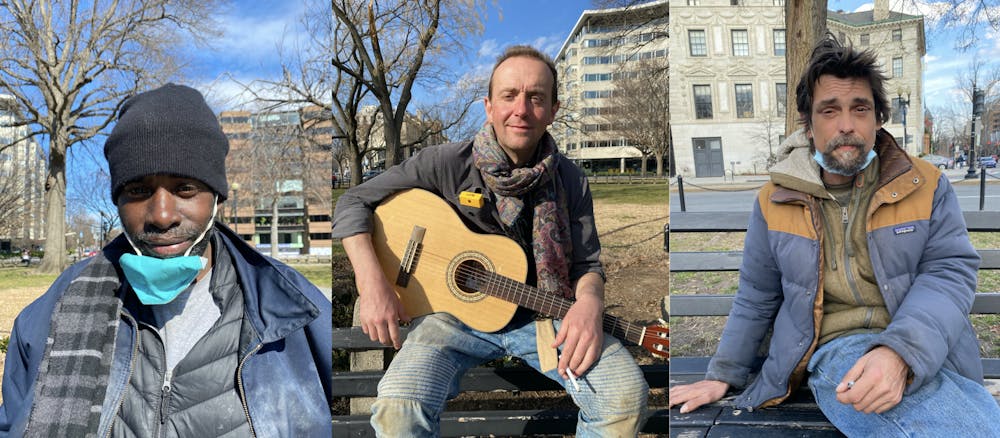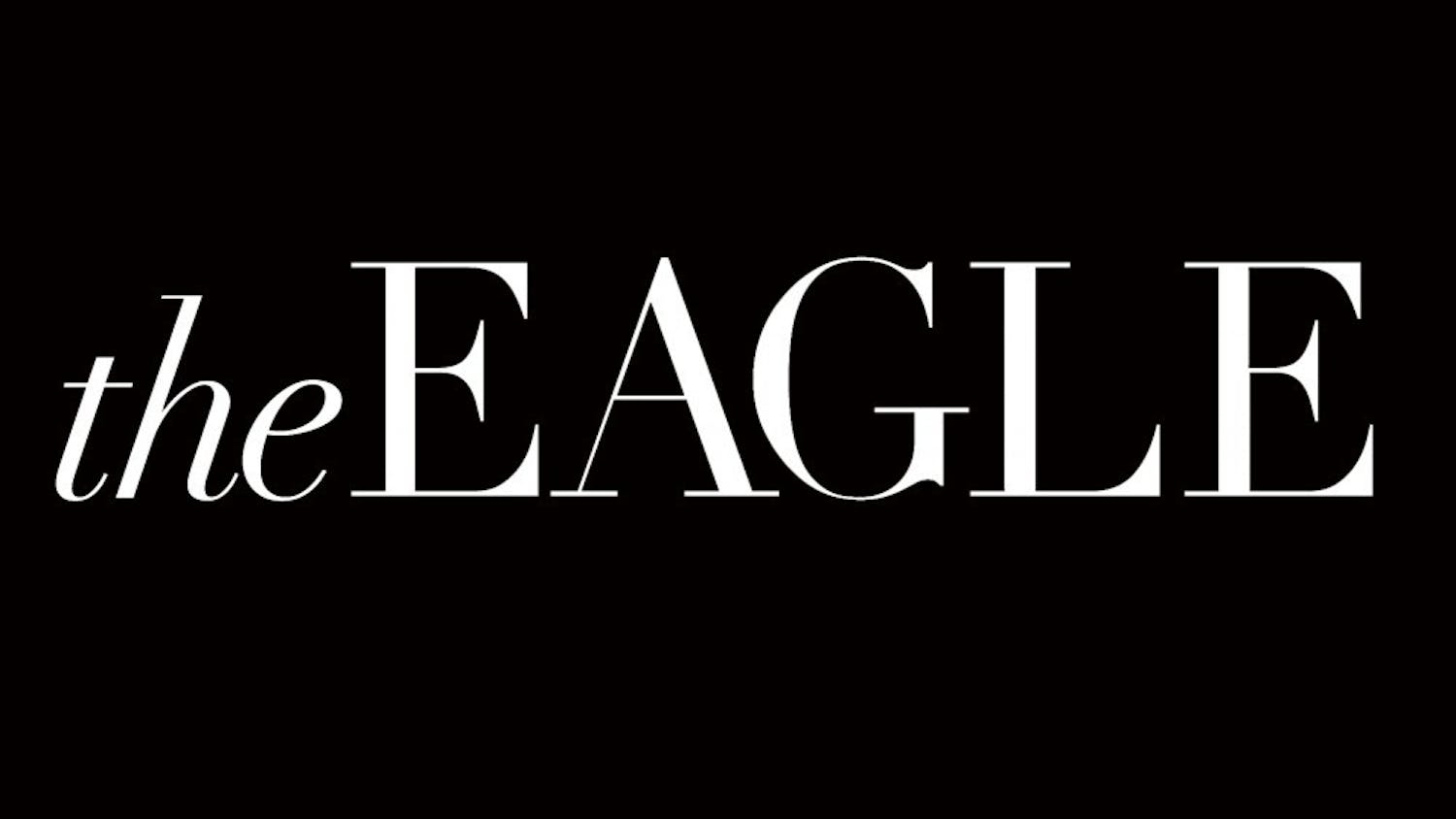For the students, politicians and over 20 million tourists that travel, study and conduct business in D.C. each year, the issues of housing and homelessness likely rarely cross their minds.
The city’s reputation conjures up images of federal buildings, beautiful museums and important people, largely in line with the city’s history as a seat of policy, economic and academic powers. However, when you look past the rose-colored facades worn by the Beltway’s power brokers, a truer D.C. is revealed. A district where systemic marginalization intersects class and race lines is as integral to the city as tourist hotspots, like the Washington Monument and the Smithsonian museums.
D.C. has about 7.2 unhoused individuals per 1,000 persons, a 21 percent increase from the previous year and twice the national average, according to the Community Partnership for the Prevention of Homelessness. From the benches outside the Tenleytown Wawa to the steps of the Lincoln Memorial, D.C.’s unhoused are overlooked by citizens and American University students alike.
The issue of homelessness in D.C. is exacerbated by Mayor Muriel Bowser’s administration’s policy regarding homeless encampments, titled “Homeward D.C. 2.0.” These outdoor unhoused communities, often composed of tents and sleeping bags, fall victim to rapid clearings by the administration.
This controversial policy practice is more than a threat to the physical safety of the unhoused, as exemplified by a recent incident in which an unhoused man was hospitalized after being injured by a bulldozer picking up the tent he was sleeping in. It dehumanizes the unhoused, as it treats them as an unwanted burden rather than rightful citizens deserving of care and attention. Therefore, the humanity of the district's routinely dehumanized population must be shared to educate, inspire and remind both D.C. civilians and AU students of unhoused humanity.
A look at the history of the housing crisis
Homelessness in D.C. has been an evolving matter with destructive practices and policies contributing to racial inequality. Housing, or lack thereof, became the center of attention due to the economic catastrophe that was the Great Depression. To combat the intensifying hardships and struggles, the U.S. Federal Housing Administration was created to make housing more affordable. But it was not a universal application, as the construction of subdivisions for white families was subsidized while African-American neighborhoods were intentionally excluded, a practice known as “redlining.”
The post-World War II “white flight” sharpened the difference in the quality of life among different neighborhood communities. It was not until the ‘60s, during the Kennedy Administration, that new programs and affordable housing units were introduced and expanded nationwide. After decade-long increase in homelessness, the Kennedy Administration made the misstep of trying to improve the welfare of people with mental illness by moving individuals out of institutions and into society. Nevertheless, the lack of proper supervision led to many former patients ending up homeless or imprisoned. The issue was exacerbated when Vietnam War veterans returned and suffered from drug addiction, depression and post-traumatic stress disorder.
History witnessed the first court involvement when the Supreme Court struck down many state measures that criminalized vagrancy with absurd requirements for welfare. Mitch Snyder, then a prominent figure in the Community for Creative Non-Violence, brought the plight of unhoused people to the public’s attention. In 1973, Snyder began working for CCNV; he organized political demonstrations and occupied abandoned buildings to gain more public attention and make homelessness a national issue.
The Reagan Administration relinquished much of its responsibility regarding affordable housing following the economic recession, creeping gentrification and the increase in illegal drug transactions and usage. This left local governments to deal with the issue however they saw fit. During this period, the public realized the government's crucial responsibility to fund social welfare programs. A decrease in government spending for the poor correlates to a decline in the number of affordable housing units available, which leads to an increase in homelessness.
Federal support for subsidized housing dropped from $32 billion in 1981 to $7.5 billion in 1988. A turning point for the CCNV was the year 1984, when its members started occupying and operating abandoned federal buildings as shelters. This move gained media attention that pressured President Reagan to provide funds for essential shelter renovations.
Efforts by Snyder and other activits’ in the early 90s showed that the housing crisis required more than basic housing needs for people to climb back up. This prompted the Clinton Administration to treat homelessness as a priority. The federal government doubled the budget for homelessness within D.C., pledging $20 million over five years to turn the district's homeless service system into the “Continuum of Care.” This relationship-building program proved that the housing crisis is more than not having a place to live. It focused on long-term care like job training, mental health services and domestic violence counseling. This priority continued during the Bush Administration with the establishment of the White House Office of Faith-Based and Community Initiatives, which encouraged religious groups to apply federal funding to public service programs. In 2004, D.C. joined a group of cities in launching a 10-year plan to end homelessness: “Homeless No More.”
D.C. remains in a struggle as underlying factors — the profuse gentrification and legacy of racial inequality — still impact the current housing crisis and the unhoused population.
Present-day implications
The history of homelessness in D.C. brings us to the present-day, where it intertwines with recent developments: the coronavirus pandemic, anti-homeless infrastructure and the clearing of homeless encampment communities.
When understood in the context of the city’s long and oft-painful history regarding homelessness, these recent intensifiers put D.C.’s unhoused civilians in a precarious, if not downright deadly, position. The average life expectancy of an American unhoused person is nearly 18 years lower than the national average, according to a 2017 study by the National Center for Biotechnology Information.
This low quality of life for unhoused populations is further exacerbated when extraneous factors are introduced, such as the ongoing pandemic. The pandemic hit D.C.’s unhoused community hard, as it spread quickly through shelters, infecting a community that is disproportionately medically insecure and immunocompromised.
Another current obstacle facing D.C.’s unhoused community is the rise of anti-homeless infrastructure called “defensive architecture.” This infrastructure consists of urban infrastructure and spaces that are made deliberately obstructive and uncomfortable for unhoused people who may otherwise sleep or set up on or by it. As highlighted in an October 2021 story by Georgetown University’s newspaper The Hoya, pieces of anti-homeless infrastructure, such as benches with ridges in between to prevent anyone from sleeping on them, were marketed by manufacturers as “anti-vagrant benches,” in case there was any doubt surrounding the purpose of this structure.
We sat down with three members of D.C.’s unhoused population in Dupont Circle to get to know them as human beings and explore how policy changes and circumstances had brought them to where they are now.
What were your hopes, dreams and ambitions as a kid? Where did you go to school?
Flyth: I went to Cardozo High School. I’ve been trying to find a goal for so long. It’s hard in a world that works against you. It’s hard.
Bruce: Boston College. I wanted to be a sportscaster and go to Syracuse, but it was too cold. Then, I wanted to be an advertising creative director, but had massive imposter syndrome. But then, I just wanted to be a person that matters in the world. Somehow with me living in D.C., I like to think I’m doing that.
Daniel: I went to school in Pennsylvania. It was partly a psychiatric ward, a very good one. I didn’t have any dreams as far as I can remember, just wanted to stop getting abused.
Tell me about your experience being homeless.
Flyth: I’ve been homeless for years. People become homeless because people got nowhere to go or to stay at. Our “homes” are all messed up. Some of us just stay up all night.
Bruce: I lectured and spoke my mind on various topics, such as destroying capitalism, which started to attract the attention of international organizations. I became locked up for a while because I had this plan to dismantle the system and felt as if capitalism was disempowering to me as a human being. I lost everything after that.
Daniel: I have friends that are homeless for many different reasons. Some ran away from their family when they were young, some waited until they were 18 and some were founders of a company or a philanthropist and got into financial trouble.
Have you lived in any encampments or formed any sense of community? If so, what was your experience like and has policing affected your living standards?
Flyth: Yes, It’s hard. You can't go to nobody else, nobody is trying to help. Because nobody is trying to help you. The police don’t really try to help you. They don't want to help you. I lived my whole life out here. All I understand is how it is out here. Nobody will care. You’re just out there in the world by yourself.
Bruce: Yeah, mainly older, retired veterans that I speak to on a regular basis. There’s this guy Mike, 74-years-old, who did service in Vietnam and has all these stories that have me in awe. I’m always impressed by him because he sits out here in this maroon North Face coat whether it’s 10 or 50 degrees and I’m in 18 layers of clothing shivering. Community-wise, it feels like a union.
What do you think the government can do to reduce homelessness?
Daniel: There’s a lot of huge complexes in D.C. that are lined up together without people living in them. I think they should start filling them up. Psychological problems in the homeless should be looked after as well and constantly have doctors and nurses check up on you. Instead of owning meaningless buildings, you can have housing where people are looked after and visited.
Flyth: Give us a place to live in and get us on our feet. Try to get us a job and help us because we’re all outside. Every morning that comes with us still out here, it gets worse.
MOVING FORWARD AS A UNITED COMMUNITY
Homelessness is not only a housing issue or an inherent part of our society when there are feasible measures to take and practical ways to be in solidarity with marginalized communities. The homeless crisis will not decrease or disappear simply because it is not visibly in sight of us.
While there needs to be more community engagement and federal and local aid to help unhoused people in D.C., it is just as important to support our community directly through smaller individual steps. This action can start with enacting the values of a solidarity economy framework within the community that requires us to mend interpersonal relationships and build new economic practices, such as mutual aid networks. It’s time to become the changemakers that we pride ourselves in.
Kayla Kelly is a junior in the School of Public Affairs and the opinion managing editor for The Eagle. Emily Brignand is a sophomore in the School of International Service and a columnist for The Eagle. PJ Cunningham is a freshman in the School of Public Affairs and a columnist for The Eagle.
kkelly@theeagleonline.com, ebrignand@theeagleonline.com and pcunningham@theeagleonline.com





